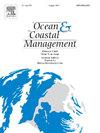板鳃鱼捕捞的驱动因素是特定地点和特定渔业:来自印度东西海岸渔业比较评估的见解
IF 5.4
2区 环境科学与生态学
Q1 OCEANOGRAPHY
引用次数: 0
摘要
近岸渔业捕捞是对沿海板鳃亚种的主要威胁,全球范围内75%以上的板鳃亚种面临灭绝的威胁。对这些高度动态渔业的有限了解阻碍了利益攸关方保护政策的设计和实施。为了解决这个问题,我们开发了一种跨学科的方法,将登陆数据与捕鱼地理位置、甚高分辨率(VHR)卫星图像和渔民访谈相结合,模拟板鳃鱼的捕捞动态,并绘制出高捕捞潜力区域。我们比较了在印度东西海岸的维萨卡帕特南和马尔万两个地区,板鳃鱼的捕捞率如何随物种生态、栖息地和渔业特征而变化。我们在2022-23年的三个海洋季节从两个地点的登陆点取样了2209次钓鱼旅行。我们记录了来自20个物种的5578个elasmobranch,其中至少13个被归类为“受威胁”。刺网、钩线和拖网是最常见的渔具,但它们的使用和捕获率差别很大。在东部地点(它们可能是专门针对的地方),蓝鳃亚种被捕获的风险更高,而且通常更大。在西海岸的浅水地区和夏季,两个地点的捕捞率都较高。重要的是,我们证明了板鳃鱼捕捞的驱动因素是特定地点和特定渔业的,强调需要更多的地方尺度的研究来规划保护行动。我们的框架提供了一种强大的方法来研究近岸渔业的高度动态和多样性,这可以为保护行动提供信息,同时,使自下而上的方法能够保护板鳃类。本文章由计算机程序翻译,如有差异,请以英文原文为准。
Drivers of elasmobranch catch are site and fishery specific: Insights from a comparative assessment of fisheries across the east and west coasts of India
Capture in nearshore fisheries is the leading threat to coastal elasmobranchs, of which more than 75 % are threatened with extinction globally. Limited knowledge of these highly dynamic fisheries impedes the design and implementation of stakeholder-inclusive policies for conservation. To address this, we developed an interdisciplinary approach, combining landing data with fishing geo-locations, Very High resolution (VHR) satellite imagery and fisher interviews to model elasmobranch catch dynamics and map areas of high catch potential. We compared how elasmobranch catch rates varied by species ecology, habitat, and fisheries characteristics in Visakhapatnam and Malvan, two regions on the east and west coasts of India, respectively. We sampled 2209 fishing trips across three oceanographic seasons from landing sites at both locations in 2022-23. We recorded 5578 elasmobranchs from >20 species of which at least 13 were categorised as ‘Threatened’. Gillnets, hook and line and trawl nets were the most common gears, but their use and catch rates varied considerably. Elasmobranchs had a higher catch risk on the eastern site (where they may be specifically targeted) and were generally larger. Catch rates were higher in shallow regions on the west coast and in the summer at both sites. Importantly, we demonstrate that drivers of elasmobranch catch were site and fishery specific, underscoring the need for more local-scale research for planning conservation actions. Our framework provides a robust method to study the highly dynamic and diverse nature of nearshore fisheries, which can inform conservation actions and, at the same, time, enable a bottom-up approach to conserving elasmobranchs.
求助全文
通过发布文献求助,成功后即可免费获取论文全文。
去求助
来源期刊

Ocean & Coastal Management
环境科学-海洋学
CiteScore
8.50
自引率
15.20%
发文量
321
审稿时长
60 days
期刊介绍:
Ocean & Coastal Management is the leading international journal dedicated to the study of all aspects of ocean and coastal management from the global to local levels.
We publish rigorously peer-reviewed manuscripts from all disciplines, and inter-/trans-disciplinary and co-designed research, but all submissions must make clear the relevance to management and/or governance issues relevant to the sustainable development and conservation of oceans and coasts.
Comparative studies (from sub-national to trans-national cases, and other management / policy arenas) are encouraged, as are studies that critically assess current management practices and governance approaches. Submissions involving robust analysis, development of theory, and improvement of management practice are especially welcome.
 求助内容:
求助内容: 应助结果提醒方式:
应助结果提醒方式:


